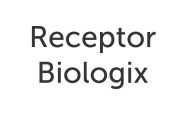AbstractAll four members of the human epidermal growth factor (EGF) receptor (HER) family are implicated in human cancers. Although efficacious in a subset of patients, resistance to single-targeted anti-HER therapy [i.e., cetuximab (Erbitux) and trastuzumab (Herceptin)] is often associated with coexpression of other HER family members. This may be overcome by a HER ligand binding molecule that sequesters multiple EGF-like ligands, preventing ligand-dependent receptor activation. Toward this end, we have combined the HER-1/EGFR and HER-3 ligand binding domains, dimerized with fusion of an Fc fragment of human IgG1. This resulted in a mixture of HER-1/Fc homodimer (HFD100), HER-3/Fc homodimer (HFD300), and HER-1/Fc:HER-3/Fc heterodimer (RB200), also termed Hermodulins. The purified first-generation RB200 bound EGF and neuregulin 1 (NRG1)-β1 ligands, determined by cross-linking and direct binding studies. The binding affinity for both was ∼10 nmol/L by dissociation-enhanced lanthanide fluorescence immunoassay using europium (Eu)-labeled ligands. Competition studies with RB200 using Eu-EGF or Eu-NRG1-β1 revealed that RB200 bound HER-1 ligands, including transforming growth factor-α and heparin-binding EGF, and HER-3 ligands NRG1-α and NRG1-β3. RB200 inhibited EGF- and NRG1-β1–stimulated tyrosine phosphorylation of HER family proteins, proliferation of a diverse range of tumor cells in monolayer cell growth assays, tumor cell proliferation as a single agent and in synergy with tyrosine kinase inhibitors, lysophosphatidic acid–stimulated cell proliferation, and tumor growth in two human tumor xenograft nude mouse models. Taken together, the data reveal that RB200 has the potential to sequester multiple HER ligands and interfere with signaling by HER-1, HER-2, and HER-3. [Mol Cancer Ther 2008;7(10):3223–36]







